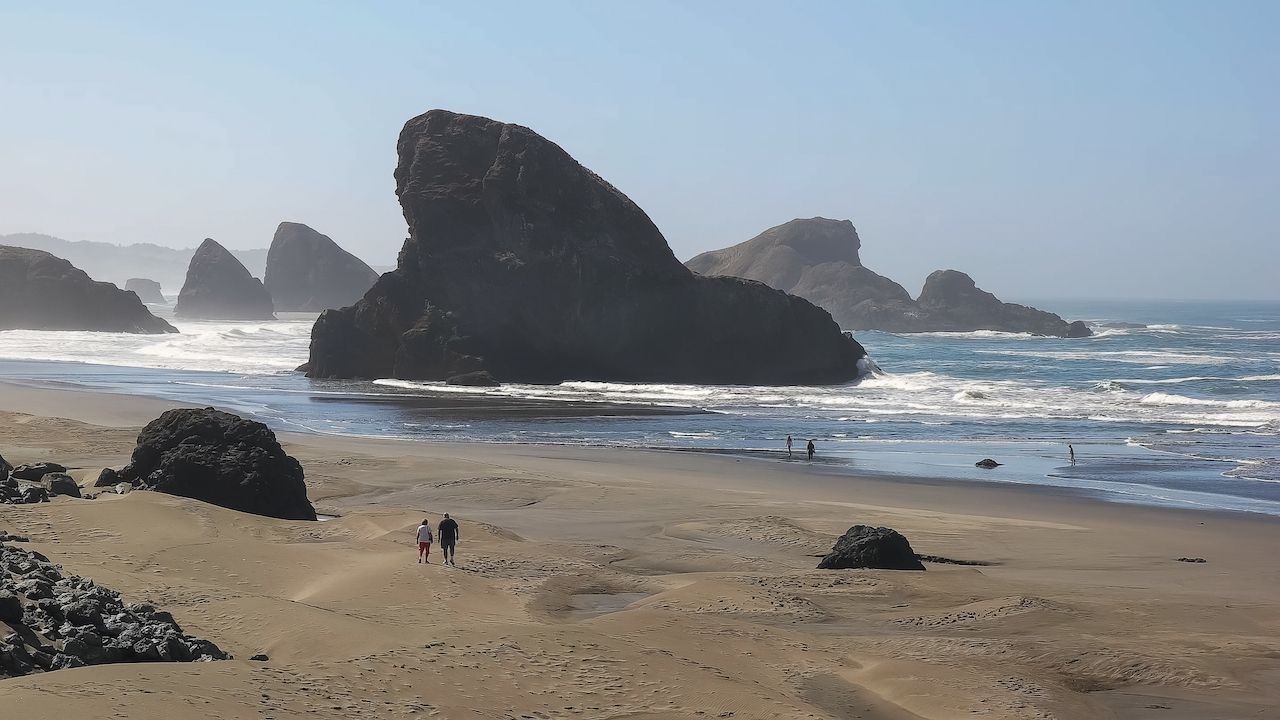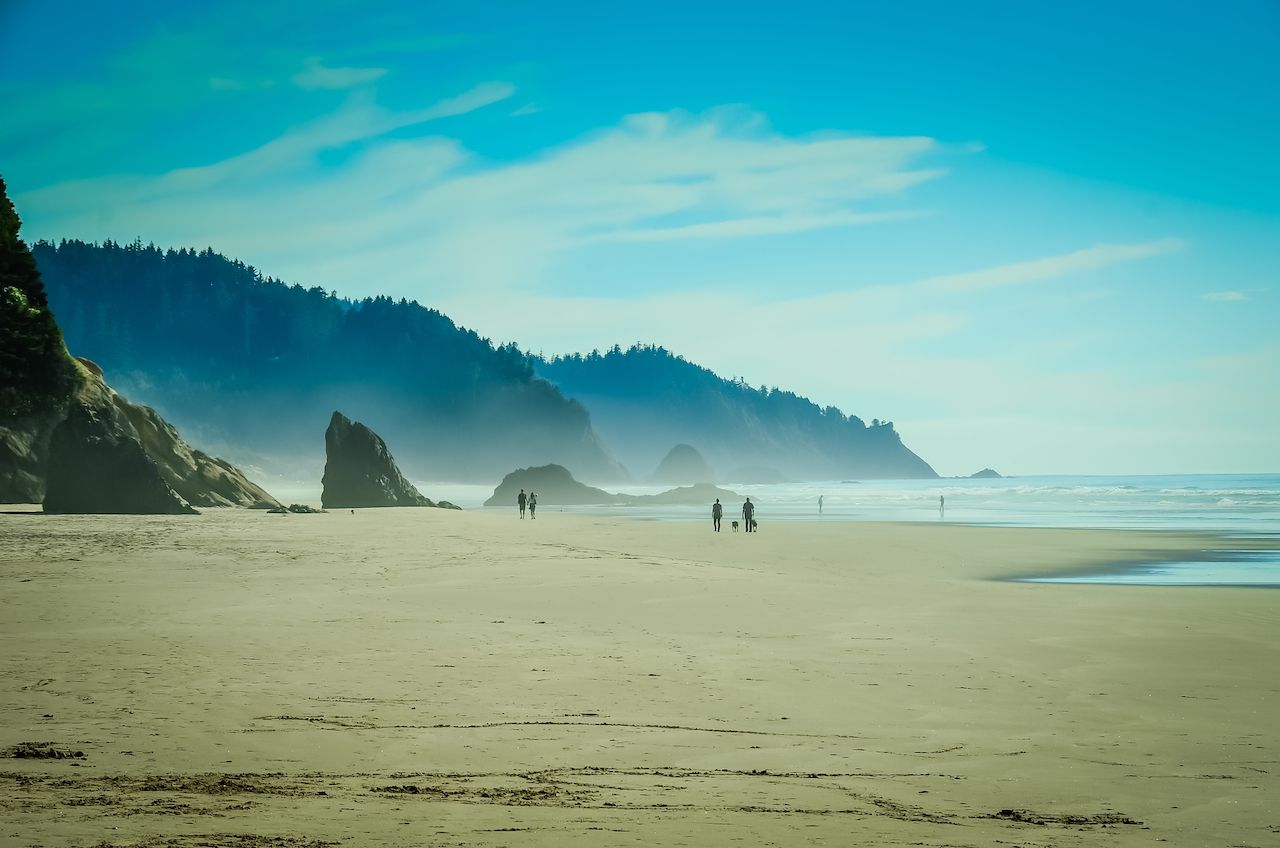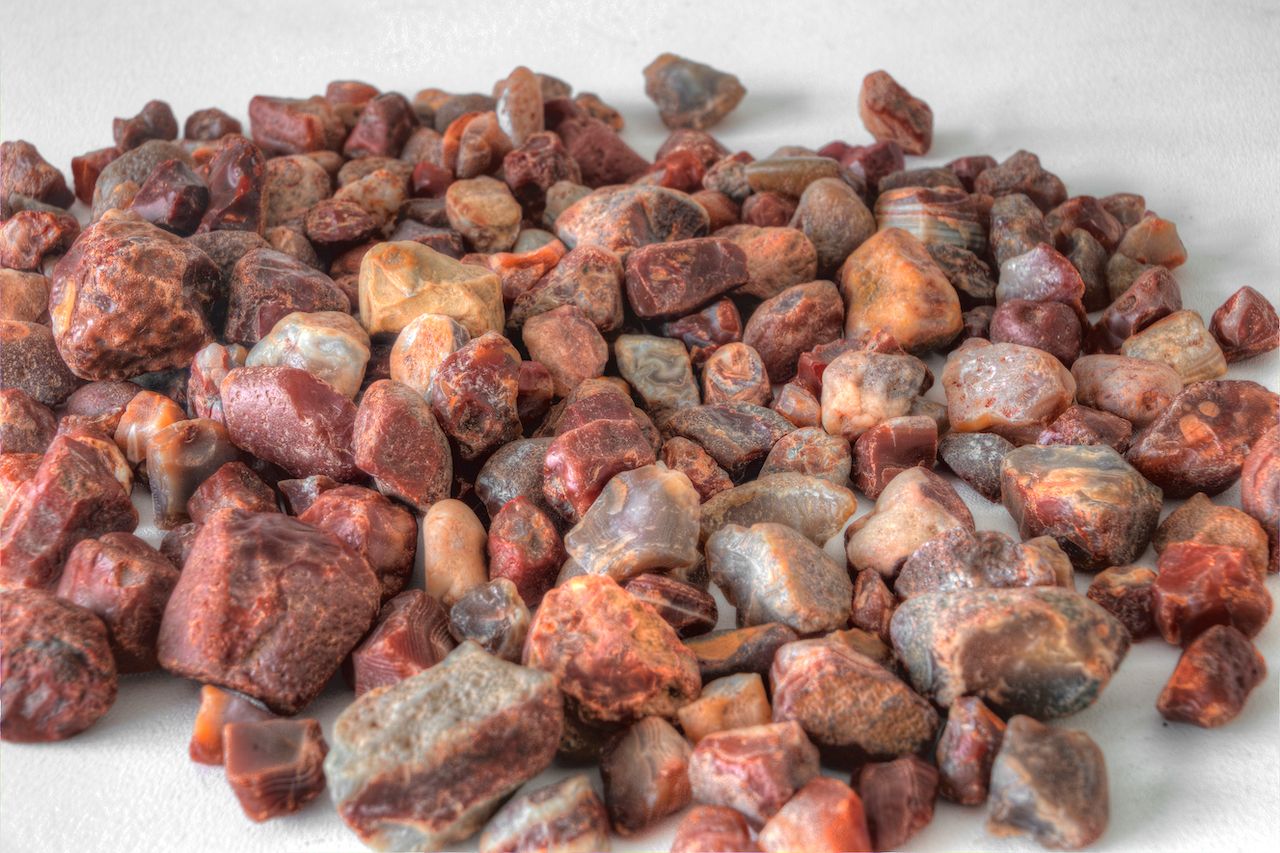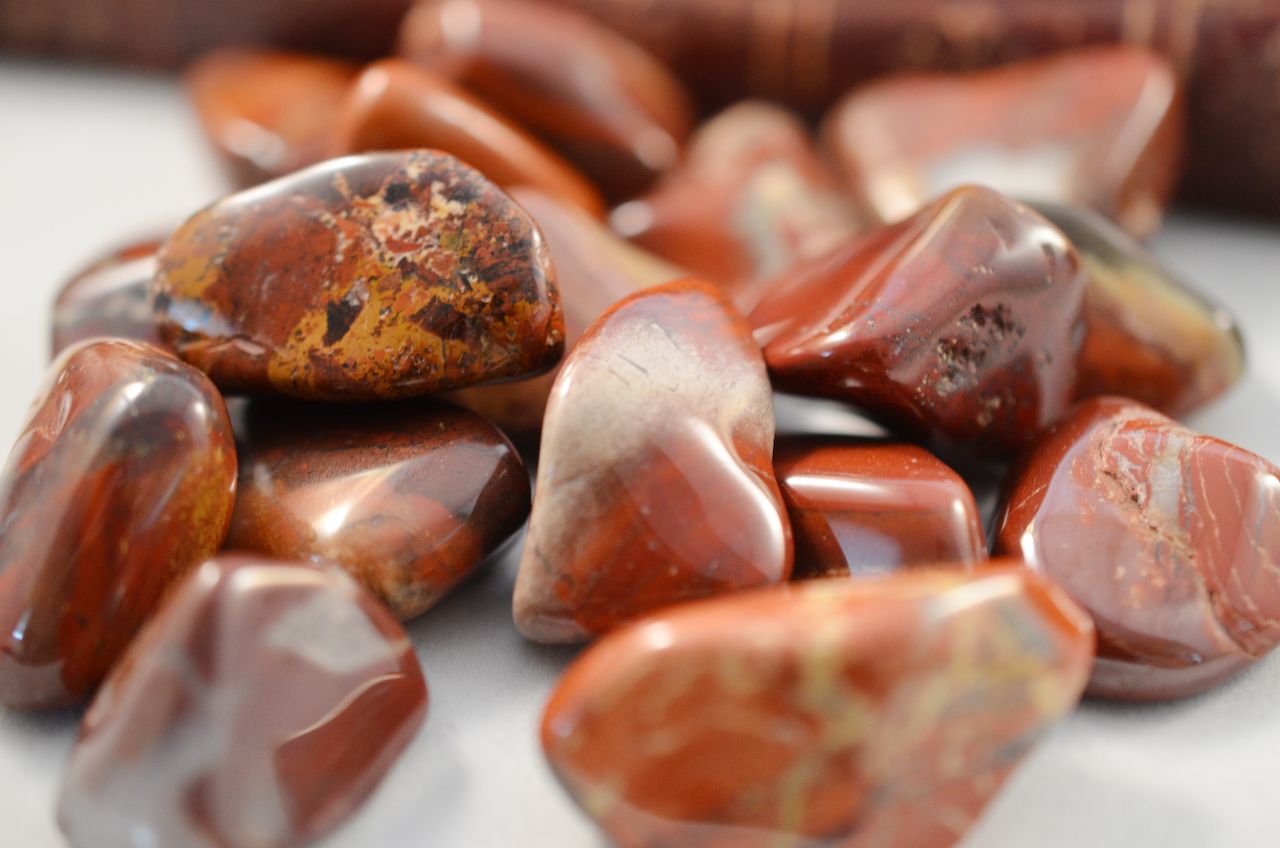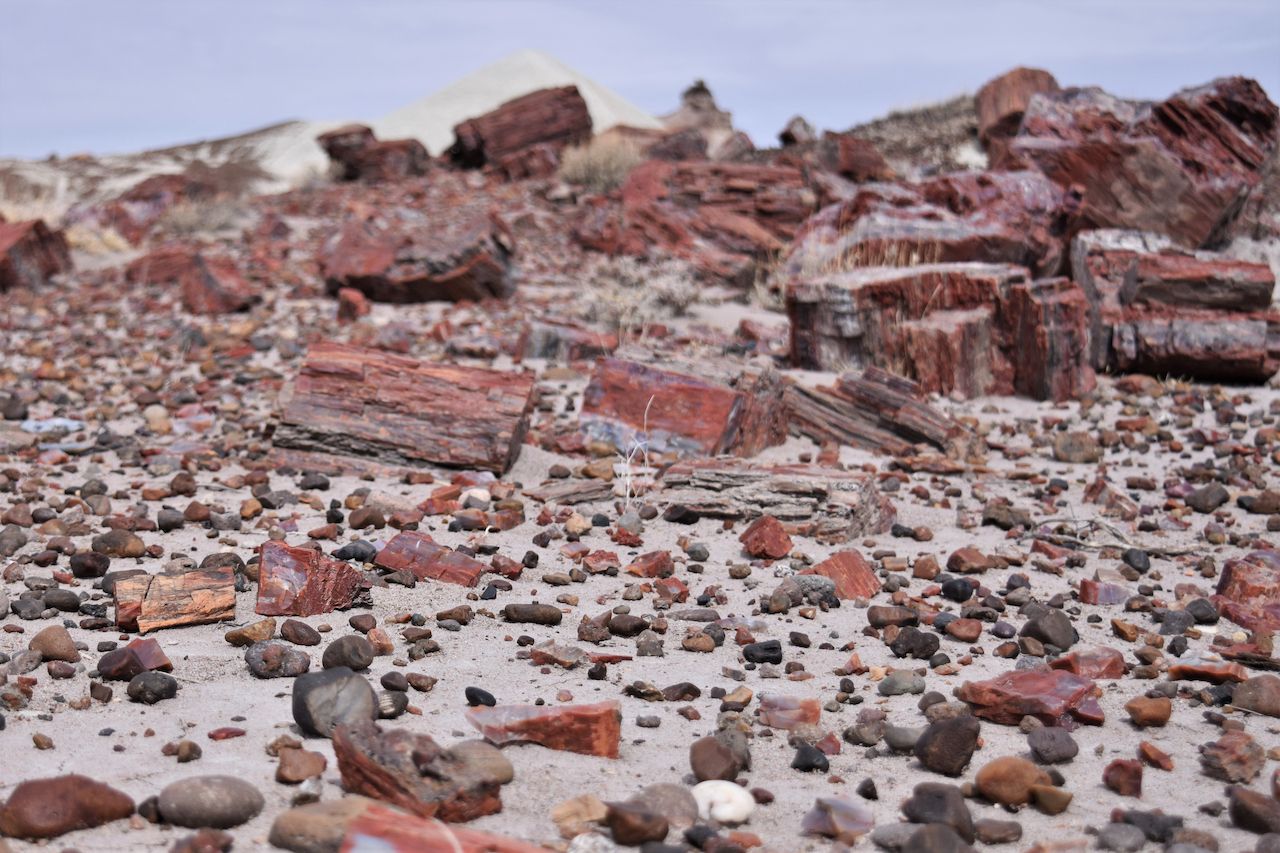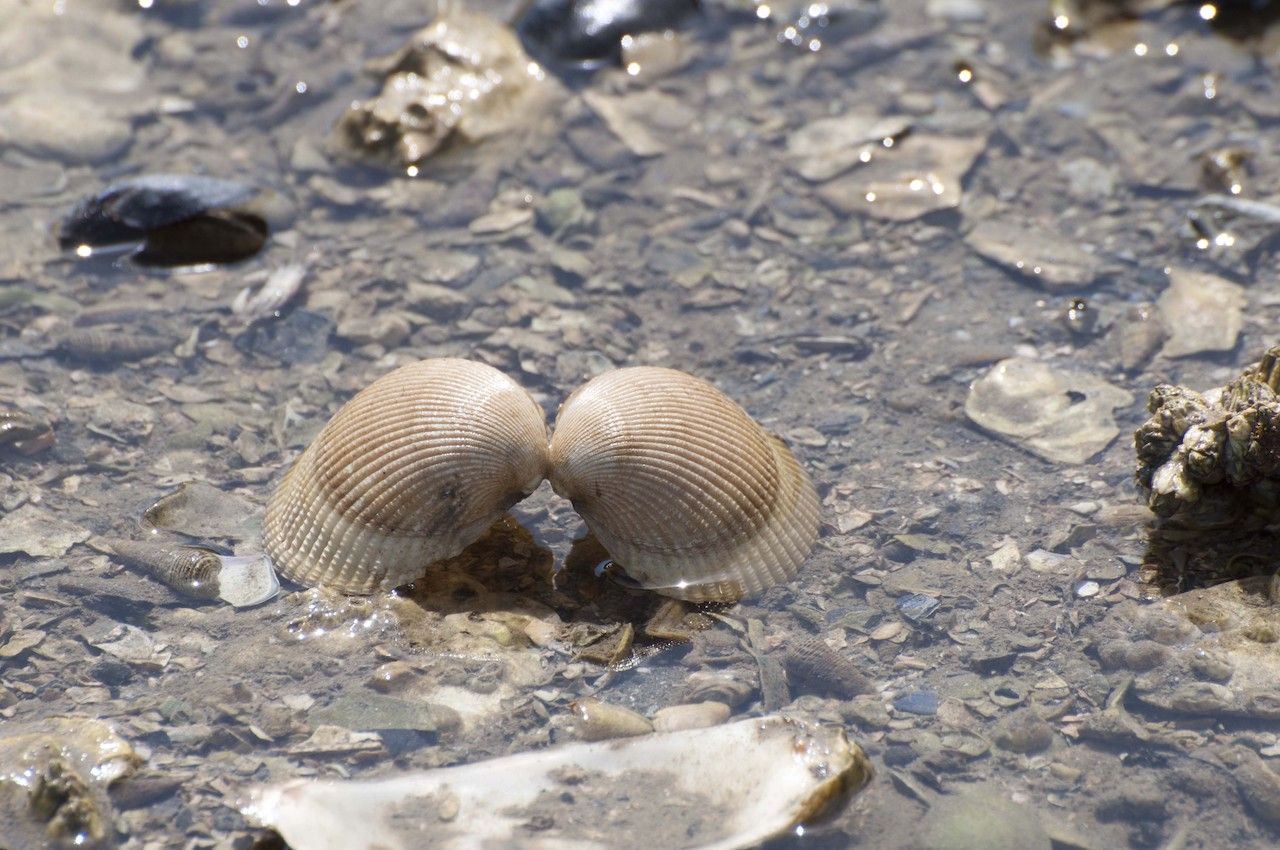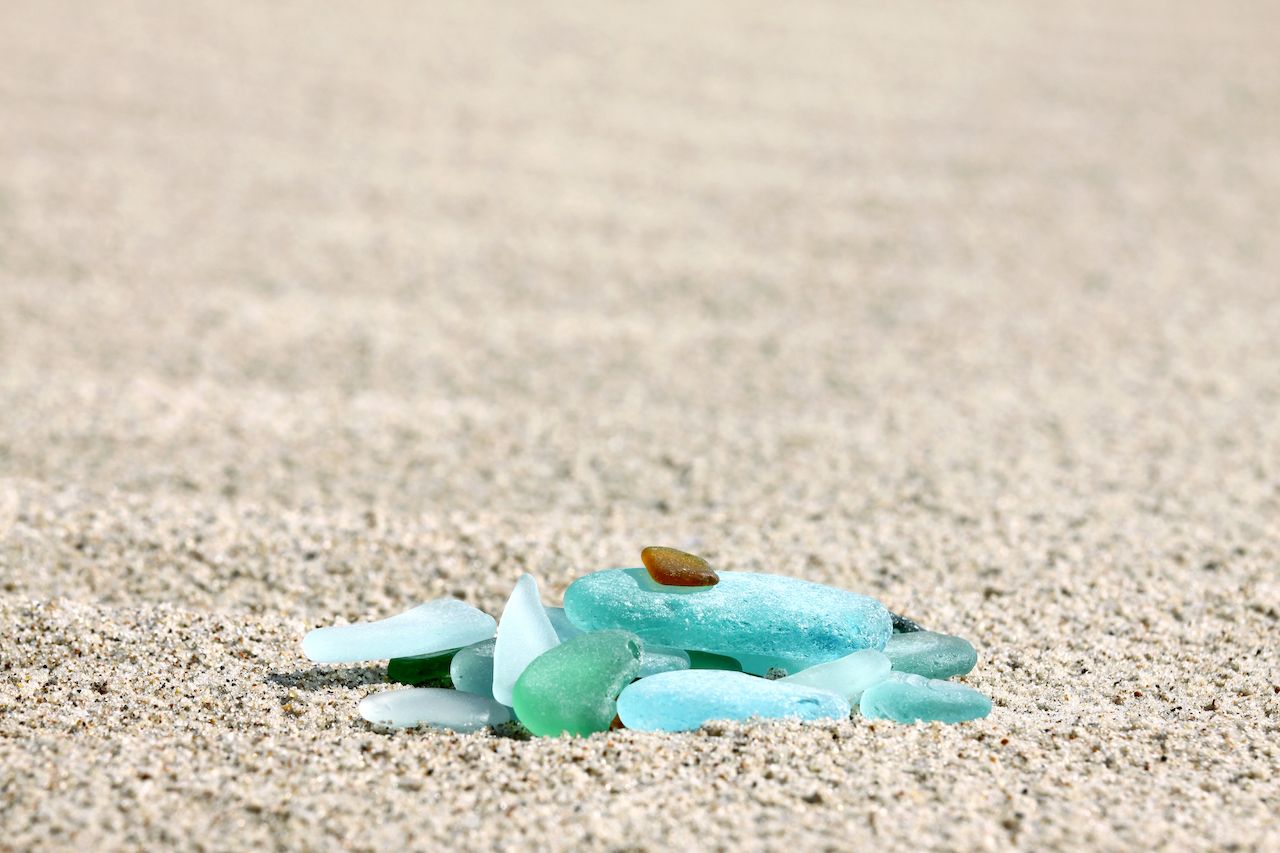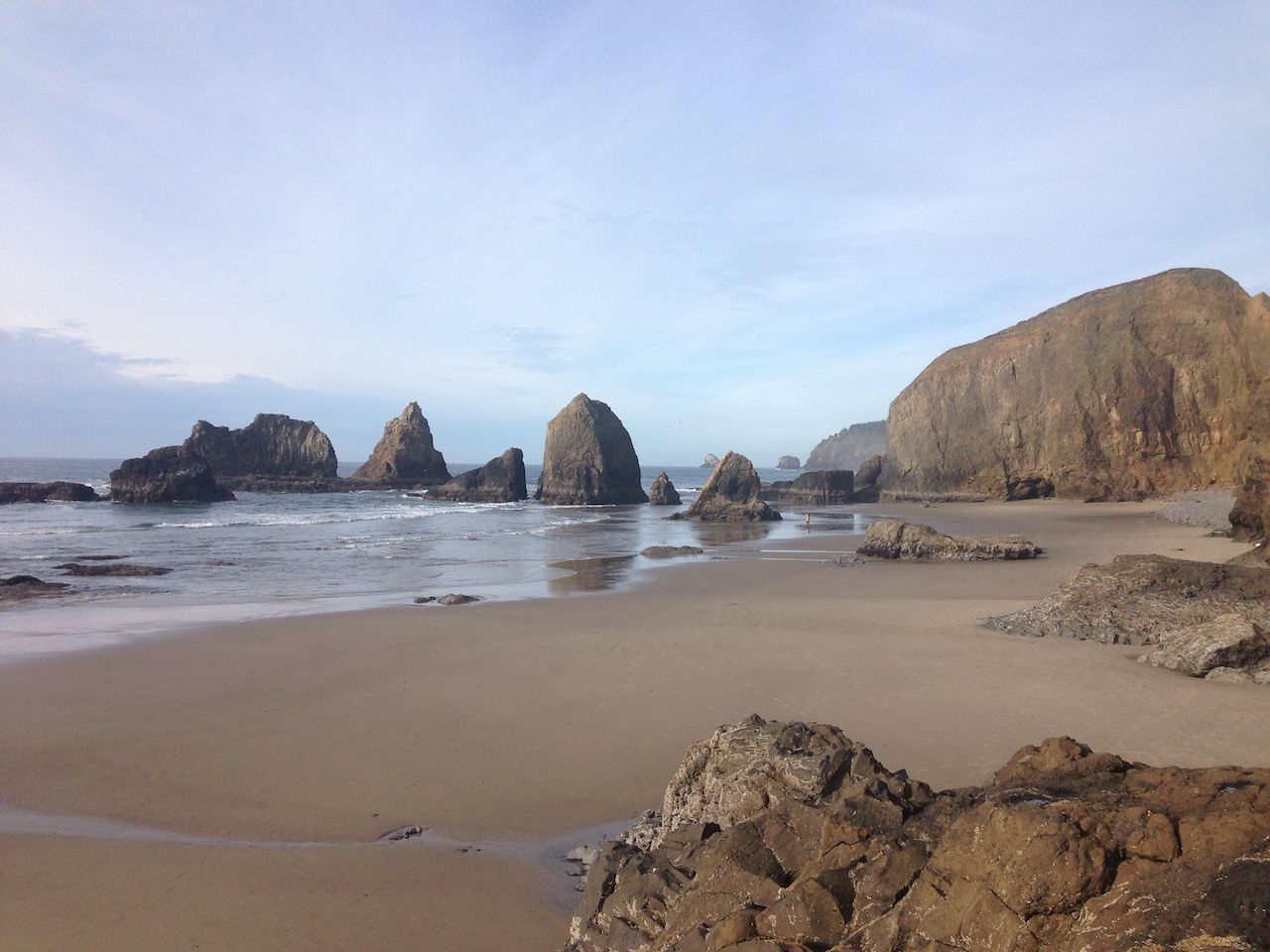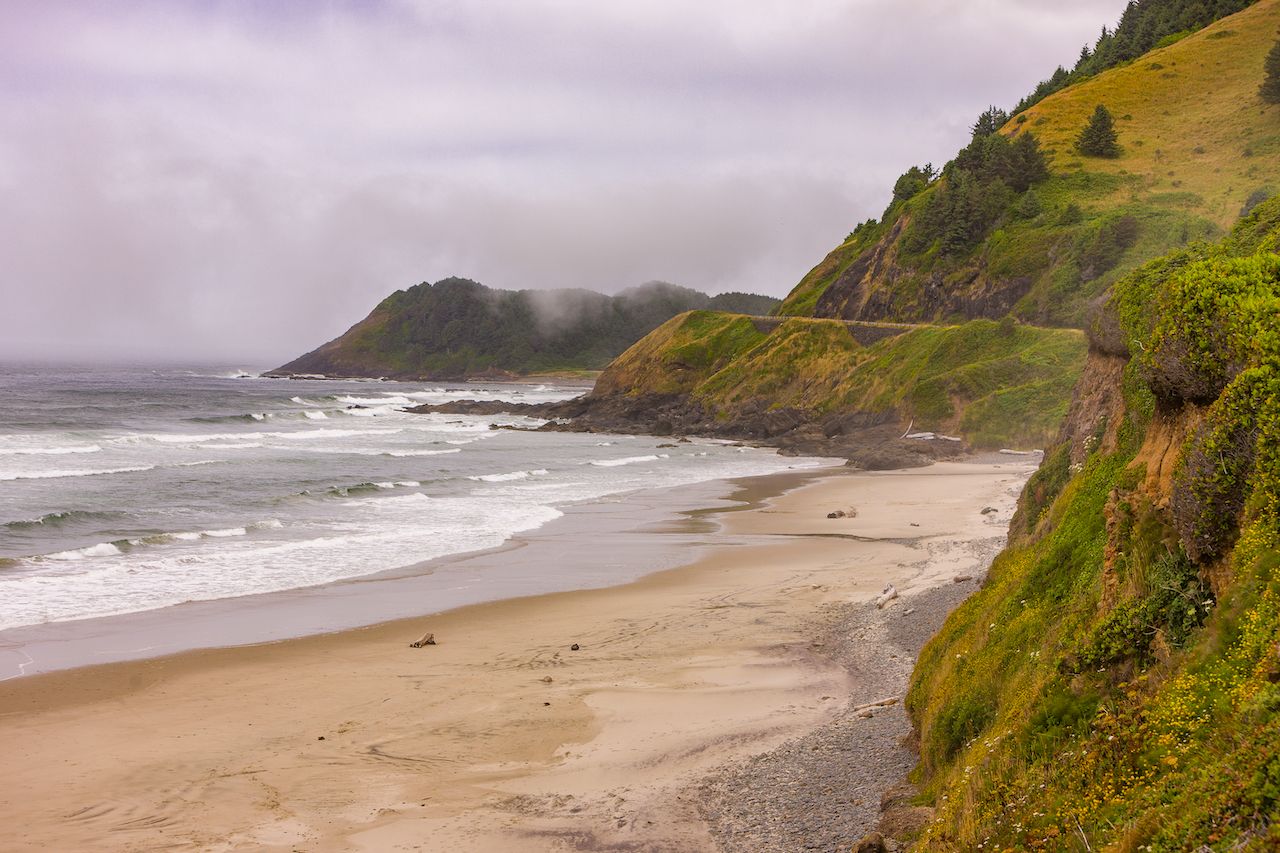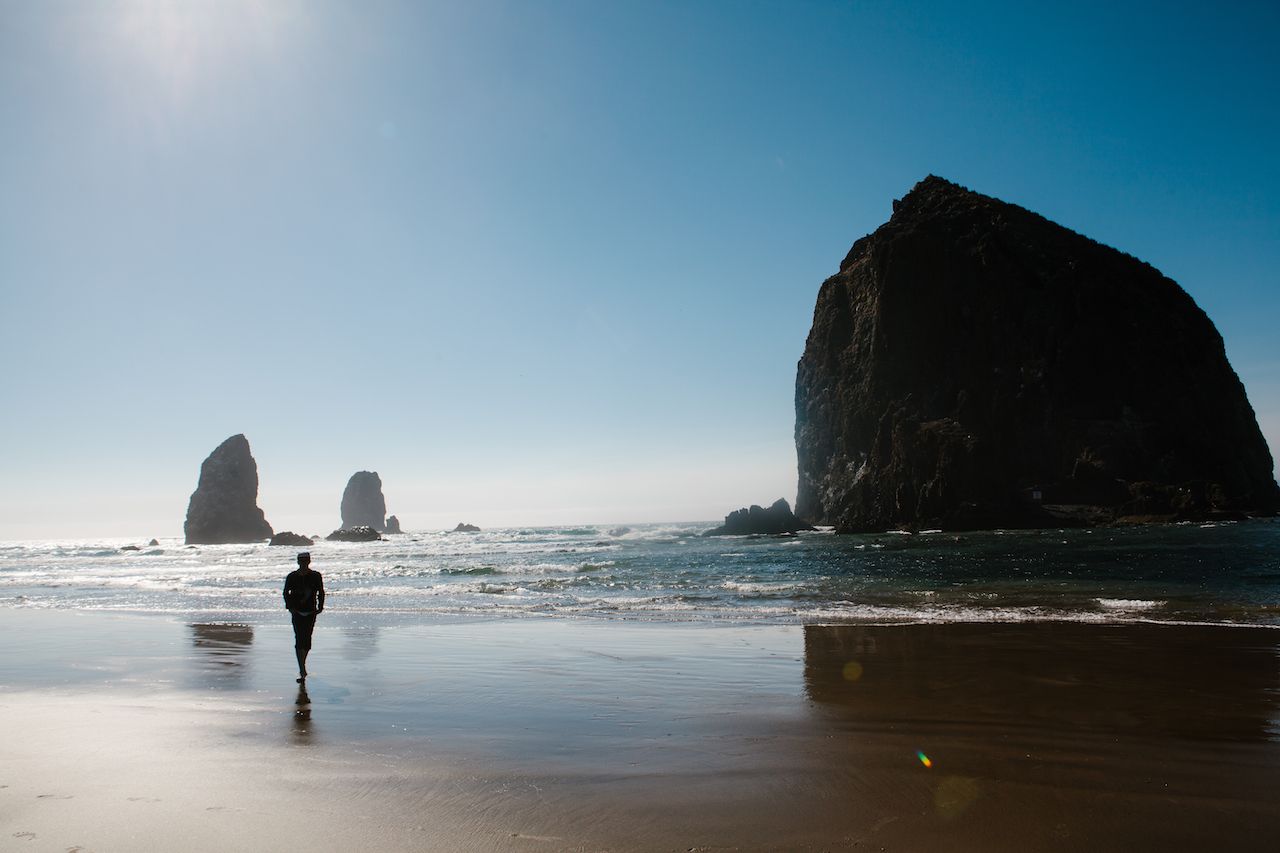Sweeping sandstone capes and headlands, basalt outcroppings dappled with tide pools, sea stacks towering in the ocean. The Oregon Coast is an environment defined by its unique geology — one that contains ancient fossils dating back millions of years and gemstones created by prehistoric lava flows. An explorer with an apt eye can find majestic stones along beaches in an activity Oregonians call rockhounding.
Rockhounding can yield everything from fiery red agates and colorful jasper to petrified wood from age-old forests, and the search can be quiet and contemplative or a fun group pursuit. Here’s everything you need to know about rockhounding, including how to look, what to look for, and where on the stunning Oregon shoreline to do so.

